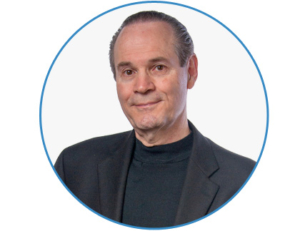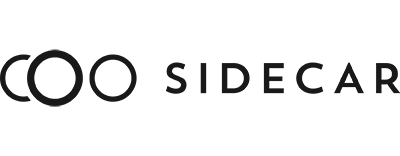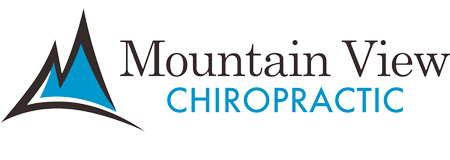We have received an overwhelming amount of positive feedback in regards to our last blog piece entitled, “The Landscape on the Box”. If you haven’t read that piece yet, check it out here! As promised when we left off last time, here is the checklist on how to improve your connectivity.There are eight core principles to improving your connectivity. Improving your connectivity will enhance the impact on your community, your role as a thought leader, grow your likeability, scale your business and ultimately increase the affluence in your life. The eight P’s of connectivity include: Positivity, Present, Prepared, Persistence, Press In, Pour In, Perform and Prioritize.
Positivity: Being positive is the critical first step in learning to connect with others. Your attitude determines your altitude and your gratitude determines your attitude. The level of success you achieve in life hinges on your ability to remain positive in all circumstances! You want to be the person that lights up a room when you enter it; not when you leave it! You need to commit to having positive energy and enthusiasm exuding out of you in everything you do. Commit to yourself right now to eliminate any negativity and to be positive. Some tangible things you can do to increase your positivity include smiling, dressing for success, staying well-groomed, and living out loud with purpose, passion, and discipline! In order to stay positive, you need to stop blaming others and take responsibility for everything that happens to you. You need to remember that nothing in this world happens to you, but happens because of you! A life of affluence all starts with a positive attitude!
Present: What does it truly mean to “be present?” Nick Saban, the head coach of the Alabama Crimson Tide football team is famous for his saying: “Be where your feet are.” Being present is having the discipline to wholeheartedly focus on the one thing that is in front of you. As humans, we think we can multi-task, but in reality multi-tasking is an illusion. The truth is we have a hard-enough time completing one task in front of us; let alone attempting to complete two things! Multi-tasking puts us at risk for creating substandard results in any area of our life. Developing the discipline to stay focused on the person in front of us creates connectivity. Have you ever been talking with someone at a party who is busy looking around and seems to be only half engaged in the conversation? How did that make you feel? Learn to live in the moment. This is a crucial point and it’s not easy. Many of us tend to worry or get stuck in our dreams. We spend way too much time living in the past or the future and not being focused on the current moment. If you want to connect deeper with people learn the art of being present.
Prepared: In learning to connect with people it is important that you are prepared. You’ve heard the saying, “Luck is what happens when preparation meets opportunity.” Be prepared by mastering your ability to communicate. Communication mastery is vital to connecting with people and involves three components: self-awareness, recognizing others, and then being able to adapt our communication and behavior to allow us to connect with each and every human being we encounter.
Self-awareness is defined as the conscious knowledge of one’s own character, feelings, motives, and desires. Self-awareness creates personal accountability, confidence, and clear expectations of what you need to be prepared to serve others. Once you have a clear understanding of yourself you can prepare to start to recognize other’s unique behaviors, needs, wants, and desires.
Recognizing others requires an understanding of the different types of human behavior. We all know that no one person behaves the exact same, but we do know that there are similar behavioral styles that are universal and these styles can be studied. At SIDECAR, we utilize a tool known as the DISC Assessment that gives us a platform to learn the art of human behavior. In fact, we have an entire Communication Mastery course in our OVERDRIVE product that helps to identify everything you need to know about communicating.
Lastly, self-awareness coupled with the ability to recognize others prepares you to adapt and communicate to create connectivity. If you understand how you communicate, and understand how your target communicates, this allows you to make the necessary adaptations for the optimal level of connection.
Persistence: Woody Hayes said it best, “Paralyze resistance with persistence.” It takes persistence to become a master of connecting with people. To develop persistence you first must commit. Commit to the process that leads to increasing your connectivity. The Persistence Process in connecting with people includes getting involved in your community, serving on boards, going to different coffee shops, engaging with waiters and waitresses, serving at your school, serving at your church, nesting in local business establishments, giving value-added talks to any group that will listen to your story, and much more. Take a genuine interest in the area you live in and be a part of your community. Stop sitting idle in your office or at your home! Persist in getting to know as many people as you can! Engage with people! Persist in your own mind to be more concentrated on being interested in others versus trying to be more interesting yourself. Persistence is day in and day out forever! Persistence is not a “one-off” event! Winner’s do daily what others do occasionally!
Press In: If you are going to connect with people you will need to be willing to “press in.” To press in is the concept of taking responsibility for your half of the relationship. Pressing in requires a high level of accountability. You need to become accountable for your actions, your thoughts, your success, and your failures. You need to press in and take accountability to learn the skill set of being “contactable.” Being contactable means that you are intentionally pressing in to widen your circle of influence. If you want to have more impact, scale your business, and enjoy deeper relationships you’re going to have to “press in.” This will require hustle; you will have to hustle for what you want! One of the most common characteristics of successful people is their ability to hustle relentlessly. People with hustle aren’t scared of the invisible, the uncomfortable, or what could happen if they make themselves vulnerable. Learn to press in and your ability to connect with more people will soar!
Pour In: To “pour in” requires you to serve and lead with your heart! You must be willing to give above and beyond yourself in order to enhance your connectivity. Become a servant leader in your business, your home, your church, your community and focus on what you can do for the betterment of others. The only way to truly receive is to give first, with no strings attached. I think one of the best examples of “pouring in” is when Jesus humbled himself to wash his disciples’ feet. He didn’t have to do this based upon who He was, but He did this act as an example of what true servant leadership looks like. So instead of seeking a “title” use Jesus’s example and pick up a “towel” instead.
Prioritize: To increase your connectivity, you are going to need to prioritize your life. For some of you, this may include adding certain things to your life that you aren’t currently doing. However, for most of you this is going to require subtracting the unnecessary things out of your life! Success is about subtracting, not adding. Unfortunately, subtracting is much harder than adding! It’s easy to pick up something new or try a quick-fix option. It’s much harder to shed something that’s been with you forever and has grown into a bad habit. The concept of essentialism teaches that to increase your impact and connectivity you must prioritize the items that you truly do well and eliminate the rest from your life completely.
Perform: Finally, we get to the connecting. Think of every opportunity you have to connect as a performance. Then, think of your performance as a dance. This time to connect with whomever may be in front of you is your time to shine! You’ve put the work in and you are prepared, now, the only thing left for you to do is dance! Put yourself out there in the best way you know how and display your talent on the grand stage. The performance is a culmination of all the previous principles. This is what you are working towards!
All these principles will allow you to connect with more people and increase your impact. They will require due diligence on your part and some areas are going to be more challenging than others. If you were inspired by any of these principles; you’ve got what it takes. Use that fire inside you to develop yourself into a master communicator and start connecting and changing more lives.
 Dr. Nathan Unruh, CXO SIDECAR
Dr. Nathan Unruh, CXO SIDECAR



 Dr. Nathan Unruh of SIDECAR
Dr. Nathan Unruh of SIDECAR Dr. Douglas Sea
Dr. Douglas Sea